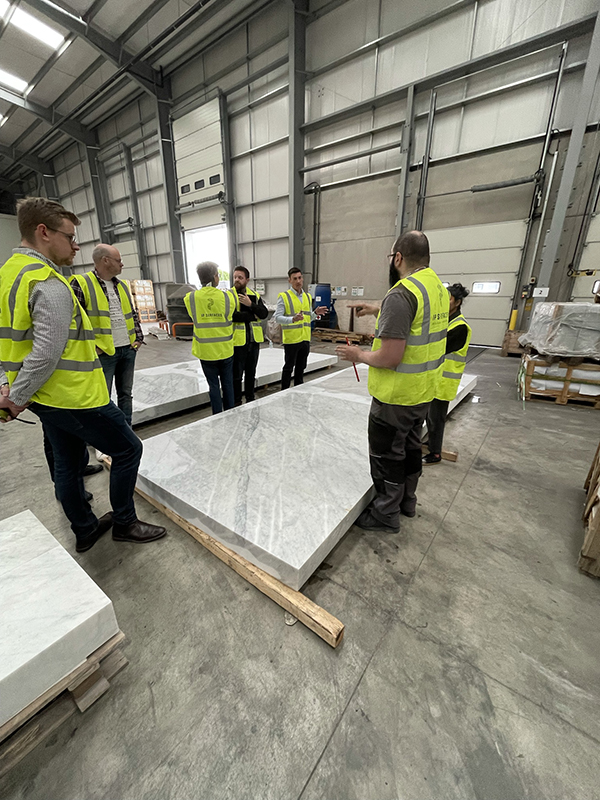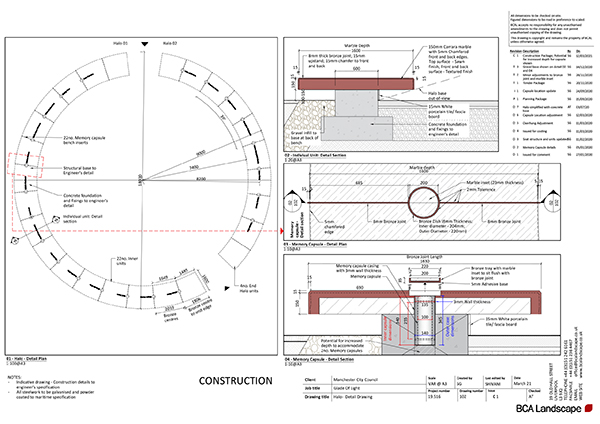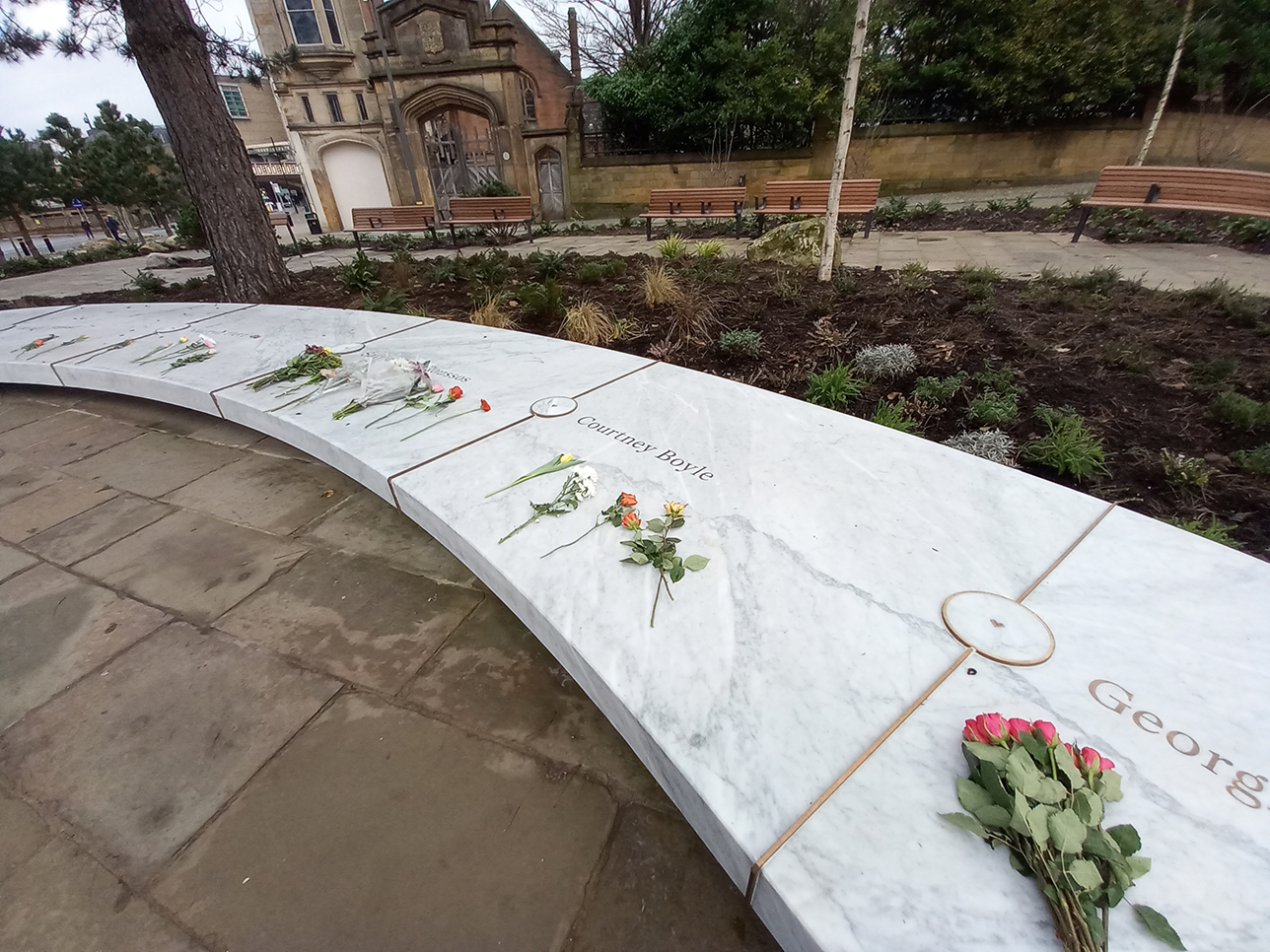STONE IN LANDSCAPING: Glade of Light commemorates 22 victims of a suicide bomber
A 56.5m ‘halo’ of marble commemorating the victims of a suicide bomber at an Ariana Grande concert in Manchester Arena was revealed in January. Here, Hardscape and IP Surfaces talk about their making of the memorial.
Precision and attention to detail. They were the vital ingredients Hardscape and its sister company IP Surfaces brought to the project to create the Carrara marble Glade of Light memorial to the 22 people who died in a terrorist attack at Manchester Arena on 22 May 2017. The victims included six children under 16, the youngest just eight.
The memorial will be officially opened later this year, on the anniversary of the atrocity, when the hawthorn tree in the centre of the ‘halo’ of marble should be full of white blossom and some of the flowers in this extension of the Cathedral Gardens will be in bloom.
However, the memorial was revealed in January when the construction and planting were completed and the fence around the site was removed.
The memorial is all the more powerful for its apparent simplicity, but as every stonemason knows, the simpler the line the more accurate it has to be. There is nowhere for errors to hide.
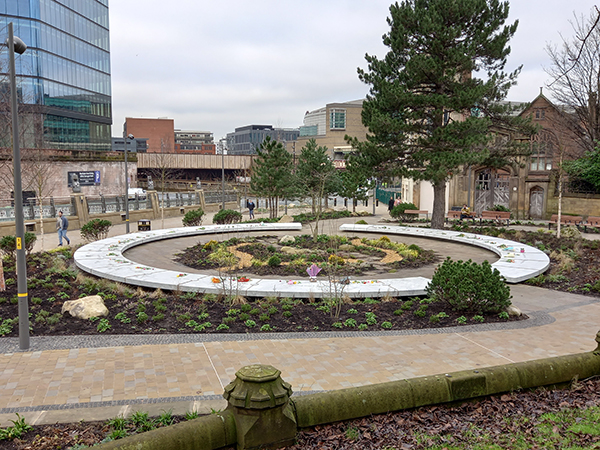
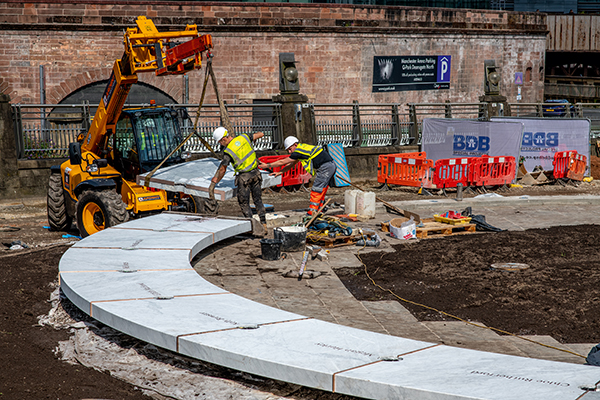
That’s why Hardscape wanted to take responsibility itself for the construction of the memorial on site. The 26 pieces of marble that form the two sections of the ‘halo’ were shaped and inscribed with the names of the victims at IP Surfaces, the company established by Hardscape founder Mathew Haslam to add lettering, inlays and other artistic elements in a variety of materials to hard landscaping. (You can read more about IP Surfaces here.)
Manchester City Council, the clients on this project, ran a competition for the design of the memorial, which was won by landscape architect BCA Landscape.
It is an indication of the importance and standing of the memorial that BCA Landscape Director Andy Thomson was interviewed by the Architects Journal, in which he is quoted as saying: “It was both a great honour and a great responsibility to win the competition to design this memorial... Set within the wild beauty of the planting is the simplicity of a circle, that references the infinite and the eternal carved in Bianco di Carrara marble.”
It had already been decided to extend the park in the Medieval Quarter at the western end of Manchester Cathedral Gardens before the bombing incident. The route had become a cut-through that Manchester City Council wanted to close.
Galliford Try had been chosen as the main contractor and Hardscape had been chosen by landscape architect Planit-IE to supply the stone for the garden. Planit-IE had worked with Hardscape before and Partner Lindsay Humblet says: “We always get 110% service from them because they’re passionate about what they do.”
Planit-IE wrote the specification for the competition for the memorial, it having been felt a third party should design it. When BCA Landscape won the competition, it was an easy decision to stick with Hardscape to produce it because BCA had also previously worked with Hardscape on a number of successful projects.
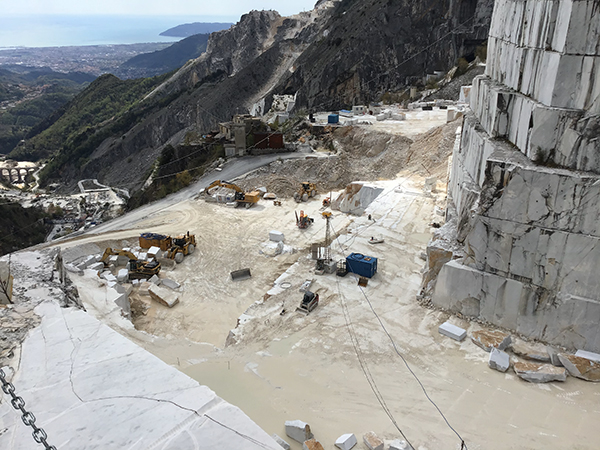
The team involved in the project visited eight quarries in Carrara, Tuscany, before deciding on the particular marble they wanted, which needed to be technically sound to offer the least amount of movement as well as being aesthetically pleasing.
BCA wanted the marble slabs to be bookmatched. As Andy Thomson told AJ: “This creates a beautiful effect within the marbled surface that also mimics the bilateral symmetry that we see in nature and is particularly evident in the ephemeral moment of a passing butterfly.”
By the time the slabs were being cut, Covid restrictions had begun and the decisions on individual slabs were made using remote digital assets via the internet. Each slab weighed 2.3tonnes.
Once the slabs arrived with Hardscape in the UK, the team came to inspect them and BCA chose precisely where the cuts would be made for bookmatching.
In the centre of each of the joining edges is a semicircle, which is to accommodate a ‘memory capsule’, containing whatever the bereaved felt was appropriate to commemorate the deceased. These are capped by bronze lids with marble inlays and central bronze hearts.
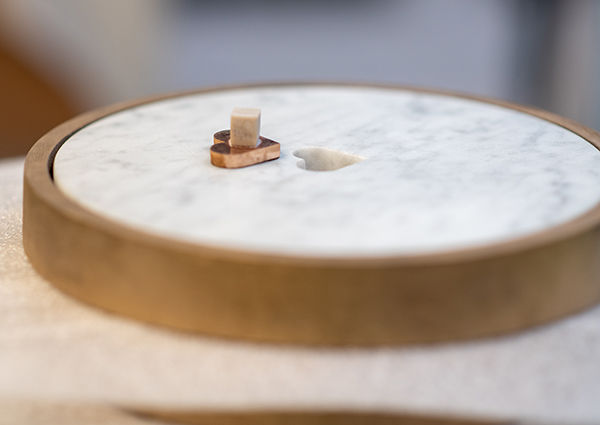
The bereaved were invited two-to-three families at a time to bring their memory items to the memorial to insert into the capsules. Once the objects had been inserted the memory capsules had to be sealed using the bronze and marble lids. One of Hardscape’s team was always on hand so the bereaved could see them being sealed, precisely, with dignity and respect.
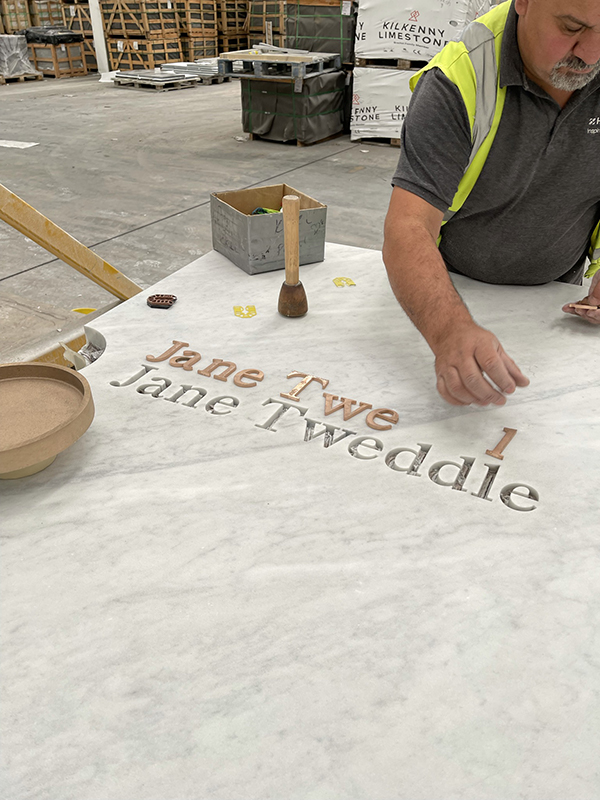
The names of the deceased are also written in the stone, with the inscription being cut by waterjet into the marble and filled with brass inserts.
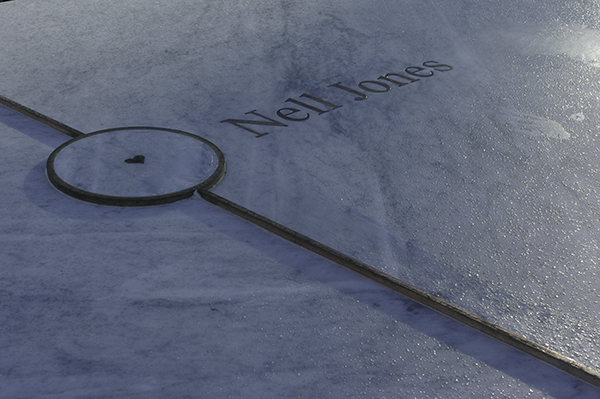
There are bronze dividers between each of the slabs that, like the memory capsule lids, stick up proud of the surface. This is largely to discourage skateboarders from damaging the memorial.
The joints were also further complicated by there being a slight fall on the marble surface to stop water pooling on it. The joints had to accommodate the fall, hence they were cut on a waterjet to achieve the compound angle required.
The marble has been sealed with Tenax Stoneline 81 to protect it and make it easier to keep clean.
As well as the memorial itself, Hardscape also continued to provide the paving for the rest of the garden. There was York stone paving already on part of the site, which has been re-used. In order for new paving to match that, Hardscape sourced newly quarried York stone from Johnsons Wellfield Quarries.
There are 1,300m2 of 150mm x 300mm x 80mm sandstone paving, half of it with the top face shot sawn and the other half diamond sawn, interspersed with a total of 30m2 of the same stone with a pattern etched into it that evokes the medieval architecture of the Cathedral.
The main paths are edged with Portuguese granite and the gardens include glacial boulders that Hardscape sourced from Wales. It also provided granite ends for wooden benches.
Mathew Haslam, the founder of Hardscape and its Managing Director, is understandably proud of the whole project and moved by the poignancy of the memorial.
He told NSS: “It’s a great example of what stone can achieve; how you can manipulate it to achieve a design intention for a particular location, and the awesome energy it can bring to a project.
“What has been achieved here has received the sort of recognition that is usually reserved for a building. It has all the ingredients of what I stand for and what the team here assists me in achieving on an hour-by-hour basis. I’m very proud of our part in this project.”
When the slabs arrived in the UK, they were inspected by the design team and the decision made about how exactly the bookmatching would be cut. Once the slabs were cut and inscribed, Hardscape took control of installation to ensure the same level of accuracy was achieved as had been required for making them.
